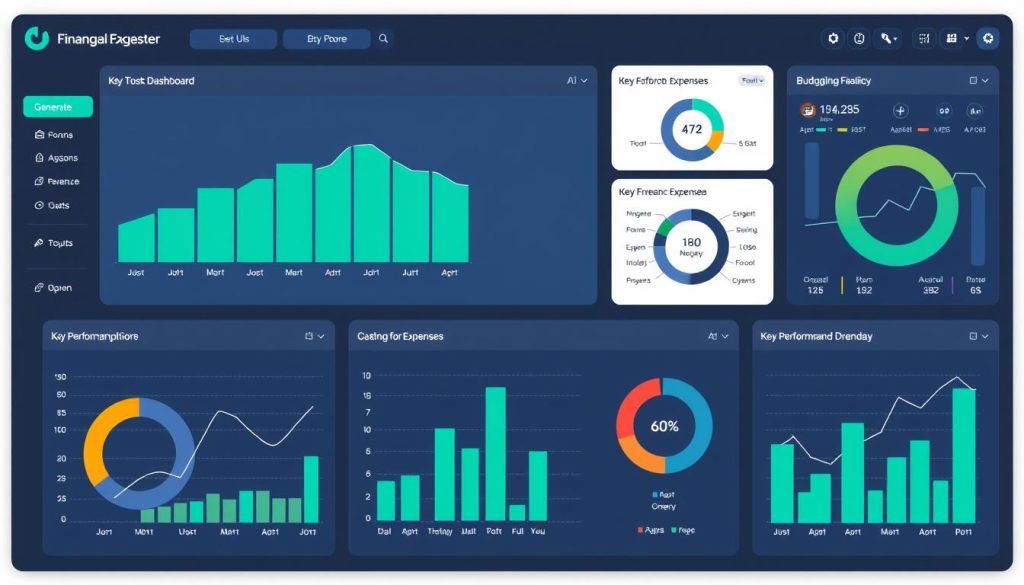As an independent professional, achieving financial independence is crucial for sustaining your career and building a secure future. In today’s volatile economic landscape, having the capacity to manage your finances effectively can be the difference between thriving and merely surviving.
Many independent professionals in France face challenges in managing their business finances, from navigating tax considerations to optimizing their business structure. However, by implementing strategic asset allocation and revenue diversification, you can create opportunities for long-term growth and financial stability.
Discover how to achieve financial autonomy by visiting our resource on the benefits of self-employment. This guide provides actionable solutions for professionals at every stage of their independent career journey.
Table of Contents
Key Takeaways
- Understand the importance of financial independence for independent professionals.
- Learn strategies for managing business finances effectively.
- Discover how to optimize your business structure for tax benefits.
- Implement asset allocation and revenue diversification for long-term growth.
- Calculate your current financial autonomy ratio and set realistic goals.
Understanding Financial Autonomy for Independent Professionals
The notion of financial autonomy is particularly relevant in the current economic landscape, where independent professional arrangements are becoming the norm. Financial autonomy extends beyond mere profitability to encompass true financial sovereignty and decision-making freedom.
What Financial Autonomy Means in Today’s Economy
Financial autonomy refers to the ability of a business or individual to operate independently of external financing. The financial autonomy ratio, calculated as Equity/Balance Sheet Total, is a critical metric that measures this capacity. For example, if a company has an equity of 100,000 euros and a total balance sheet of 500,000 euros, its financial autonomy ratio is 0.2, or 20%. This ratio indicates the level of independence from debt and external financial influences.
The Importance of Financial Independence for Freelancers and Consultants
Financial independence is crucial for freelancers and consultants as it enables strategic decision-making unconstrained by immediate cash flow concerns. It allows them to select clients, projects, and opportunities that align with their professional values and long-term goals. By achieving financial autonomy, independent professionals can navigate market volatility and economic downturns more effectively, using their financial independence as both a protective buffer and a growth accelerator.
Building Your Financial Autonomy Framework

For independent professionals, building a financial autonomy framework is a strategic imperative. This framework serves as the foundation upon which financial independence is achieved, allowing for sustainable business growth and the ability to make strategic financial decisions without undue external influence.
Self-Financing: The Foundation of Financial Independence
Self-financing is a critical component of financial autonomy, representing the net result after tax that is retained within the business. This retained earnings accumulation creates a source of equity, enabling the financing of assets without relying on external funds. Self-financing enhances a company’s equity, potentially increases its capital, and improves financial ratios. It provides the necessary resources for growth, investment, and debt repayment, all while reducing dependence on external donors.
Calculating Your Financial Autonomy Ratio
Calculating your financial autonomy ratio is essential for understanding your business’s capacity for self-sustenance. This ratio provides insight into the proportion of your business’s assets financed by equity. To calculate it, divide your total equity by your total assets. A higher ratio indicates greater financial autonomy. It’s crucial to interpret this ratio within the context of your specific sector, as benchmarks can vary significantly.
| Sector | Average Financial Autonomy Ratio |
|---|---|
| Consulting | 0.6 |
| Freelance Services | 0.55 |
| Professional Services | 0.65 |
Setting Realistic Financial Autonomy Goals
Setting realistic financial autonomy goals involves assessing your current financial position, growth projections, and time horizon. It’s essential to balance short-term liquidity needs with long-term financial autonomy objectives. By understanding your financial autonomy ratio and sector benchmarks, you can set achievable goals that align with your business’s capacity for self-financing and growth.
By following these steps and understanding the importance of self-financing, calculating your financial autonomy ratio, and setting realistic goals, independent professionals can build a robust financial autonomy framework. This framework is crucial for achieving financial independence and ensuring the long-term sustainability of their business.
Strategic Financial Management for Independent Professionals
Effective financial management is crucial for independent professionals seeking financial autonomy. This involves a multifaceted approach that balances tax optimization, revenue diversification, and investment strategy.
Diversifying Revenue Streams
Diversifying your income streams is vital for creating resilience in your business model. As an independent professional, you can achieve this by offering multiple services or creating digital products. For example, a freelance writer could offer editing services or create an online course on writing.

Tax Optimization Strategies for French Independent Professionals
French independent professionals can benefit from various tax optimization strategies. Understanding the tax deductions available, such as those for business expenses or contributions to retirement plans, can significantly improve after-tax results. For more information on optimizing your tax strategy, visit Umalis’ blog on optimizing salary savings in employee.
Building an Emergency Fund and Investment Portfolio
Building an emergency fund and investment portfolio is essential for financial stability. The emergency fund should cover at least 3-6 months of business and personal expenses. Investments can include diversified investment portfolios or real estate.
Leveraging Digital Tools for Financial Management
Leveraging digital tools can streamline financial management, improve visibility, and enhance decision-making. Tools for invoicing, expense tracking, and financial planning can help independent professionals manage their finances effectively.

Conclusion: Your Path to Sustainable Financial Autonomy
As we conclude this comprehensive guide, it’s clear that achieving financial autonomy is a multifaceted journey for independent professionals. Throughout this article, we’ve explored the essential strategies for gaining financial independence, including diversifying revenue streams, optimizing tax planning, and building a robust financial framework.
The journey to financial autonomy is unique for each professional, requiring personalized solutions based on service offerings, business structure, and long-term objectives. We’ve examined case studies of successful independent professionals who have achieved remarkable financial autonomy despite starting with limited resources.
To support your ongoing financial autonomy journey, we’ve provided practical tools and frameworks, from initial assessment through implementation and refinement. Remember, financial autonomy is not merely about accumulating money but about creating the freedom to practice your profession on your own terms. We encourage you to begin implementing these financial autonomy principles immediately, recognizing that small, consistent actions compound into significant results over time.
By leveraging the strategies outlined in this guide, independent professionals can enhance their financial capacity and achieve a more stable financial future. This comprehensive approach to financial independence balances short-term stability with long-term wealth creation through strategic investments and business development.
FAQ
What is the first step towards achieving financial independence as an independent professional?
The first step is to assess your current financial situation, including your income, expenses, assets, and liabilities. This will help you understand your financial capacity and create a foundation for building financial independence.
How can I diversify my revenue streams to reduce financial risk?
Diversifying revenue streams can be achieved by developing multiple sources of income, such as offering different services, creating and selling digital products, or investing in assets that generate passive income. This can help reduce your reliance on a single client or project.
What are some effective tax optimization strategies for independent professionals?
Effective tax optimization strategies include taking advantage of tax deductions and credits, such as those related to business expenses, home office expenses, and retirement savings. It is also essential to consult with a tax professional to ensure you are in compliance with tax laws and regulations.
How can I build an emergency fund to ensure financial stability?
Building an emergency fund involves setting aside a portion of your income in a readily accessible savings account. The goal is to save three to six months’ worth of living expenses to cover unexpected costs or financial downturns.
What digital tools can help me manage my finances effectively?
Various digital tools, such as accounting software, budgeting apps, and investment platforms, can help you manage your finances. These tools can streamline financial tasks, provide real-time insights, and help you make informed decisions.
How do I calculate my financial autonomy ratio?
The financial autonomy ratio is calculated by dividing your total assets by your total liabilities. This ratio provides insight into your financial health and independence. A higher ratio indicates a more stable financial position.
What are the benefits of having a financial autonomy framework?
A financial autonomy framework provides a structured approach to managing your finances, achieving financial goals, and maintaining financial stability. It helps you prioritize financial decisions, manage risk, and achieve long-term financial objectives.





